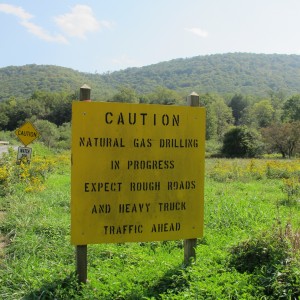Scientists I.D. Pa. Areas Most "Resilient" to Climate Change

Susan Phillips / StateImpact Pennsylvania
A sign posted in Susquehannock state forest, which makes up part of the most "climate resilient" land on the East Coast.
When it comes to climate change, much of the focus is on sea-level rise and destructive storms. But planning for any eco-system changes pretty much has scientists guessing. The Nature Conservancy just published a report analyzing 156 million acres of land from Maine to Virginia to determine the best “climate resilient” areas, in order to decide where to focus their efforts. Nature Conservancy director of science Mark Anderson says areas of land that can be best protected from the impacts of climate change are those that include diverse topography, and micro-climates. Equally important are how well-connected those spots of land are to each other.
Anderson says if enough diversity exists already, then those areas will provide pathways and new environments for both plant and animal species to migrate, and survive any ill-effects of climate change 50 to 100 years from now.
“We’re worried that a lot of areas that have rare species are really vulnerable, and we may not be able to preserve them,” says Anderson. “These [identified in the study] are areas that we can be successful. They have a lot of promise.”
Some of the areas with the most promise are those in north central Pennsylvania, in an area known as the “Pennsylvania Wilds.” That would include Clinton, Tioga, and Potter counties. Other areas of the state that stand out include the “Endless Mountain” region, in Wyoming and Sullivan counties, and the Pocono’s in the far northeastern corner of the state, around Milford.
Anderson says Pennsylvania also provides key pathways for species to migrate from north to south, and east to west.
“We never thought about Pennsylvania like this before,” says Anderson. “This is giving us a way to think about places. Even without fully understanding what changes are going to [happen] in the future.”
But many of the most resilient areas of Pennsylvania are also experiencing a boom in natural gas development, which may compromise their longterm conservation value. Nels Johnson, with the Pennsylvania Nature Conservancy, says the report will be a useful tool to work with the state agencies that oversee much of this land.
“We can’t freeze time,” says Johnson. “But these places with their diverse elevation and topography, can remain available for a wide variety of species.”
















